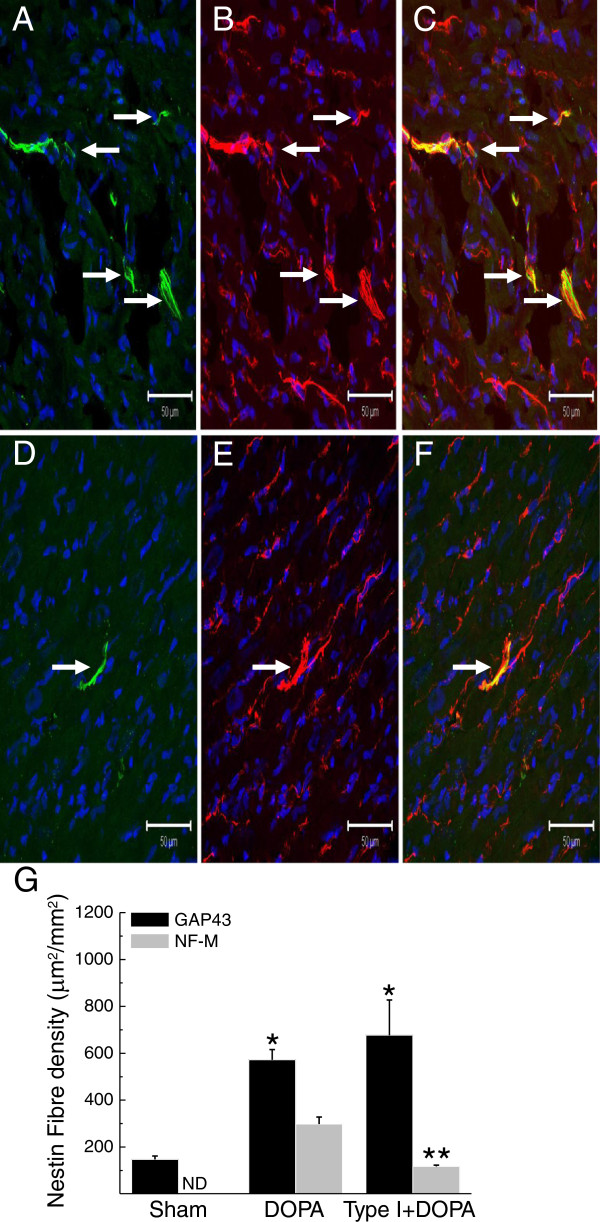Figure 4.
The impact of type I diabetes on the neurogenic response of cardiac resident nestin(+) cells following administration of 6-hydroxydopamine. (Panels A, B &C) Sham rats treated with 6-hydroxydopamine promoted the de novo synthesis of neurofilament-M (green fluorescence) by cardiac resident nestin(+) (red fluorescence) cells and the intermediate filament proteins were physically associated as reflected by the emergence of a yellow fluorescence (indicated by arrow). (Panels D, E, &F) In type I diabetic rats, the de novo synthesis of neurofilament-M (green fluorescence) by cardiac resident nestin(+) cells (red fluorescence) was attenuated in response to 6-hydroxydopamine. The nucleus was identified with TO-PRO-3 staining (blue fluorescence). (Panel G) The administration of 6-hydroxydopamine (DOPA) significantly increased the density of GAP43/nestin(+) and neurofilament-M/nestin(+) fibres in the heart of sham rats. In the left ventricle of type 1 diabetic rats treated with 6-hydroxydopamine (Type I + DOPA), the density of GAP43/nestin(+) fibres remained elevated as compared to sham rats treated with 6-hydroxydopamine. By contrast, the de novo synthesis of neurofilament-M was partially inhibited as reflected by the significant reduction of neurofilament-M/nestin(+) fibre density in the heart of type I diabetic rats treated with 6-hydroxydopamine. (*) denotes P < 0.05 versus normal, (**) P < 0.05 versus 6-hydroxydopamine-treated normal rats (DOPA) and (ND) not detected.

